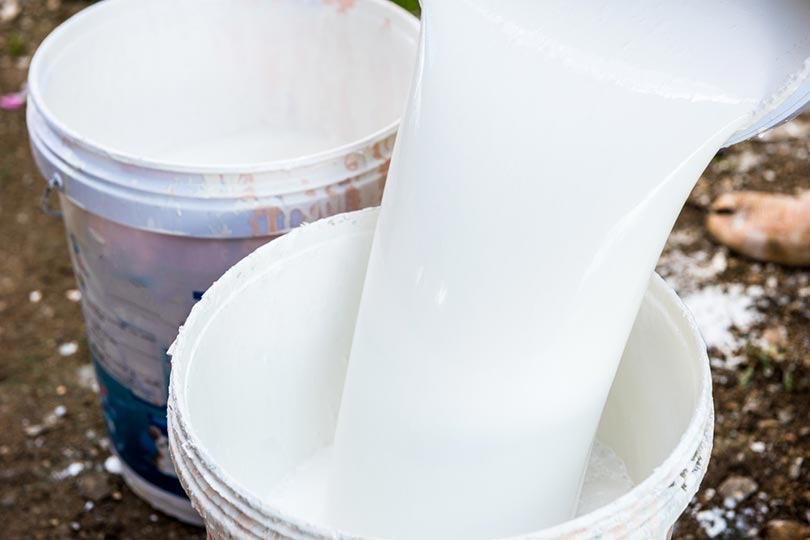How Long Do Box Turtles Live? Our Vet Explains Average Lifespan, Data & Care
By Dr. Luqman Javed, DVM (Vet)
Updated on

Click to Skip Ahead
Do you have a box turtle, or are you thinking about adopting one? Box turtles live a lot longer than a dog or cat, so they are a much bigger commitment. In addition, they have other unique characteristics that render them as challenging pets.
Keep reading to learn more about box turtles, how long they live, and how to best care for them to ensure they live a long, healthy life in your home.
Box Turtle Average Lifespan
This article refers to the genus of North American box turtles, Terrapene. Asian box turtles are categorized under the genus Cuora or Pyxidea and will not be discussed in this article. All species of Asian box turtles are considered either commercially extinct or endangered, and therefore, it is discouraged to adopt them as pets.
When properly cared for, box turtles as pets typically live about 20 years on average, depending on the species. The following are the longevity records of some species of North American box turtles.1
| Common Name | Scientific Name | Longevity Record |
| Eastern box turtle | Terrapene carolina | 138 years (wild) |
| Ornate box turtle | Terrapene ornata | 28.4 years (pet) |
| Coahuilan box turtle | Terrapene coahuila | 18.8 years (pet) |
| Spotted box turtle | Terrapene nelsoni | 24.9 years (pet) |
When properly cared for, Box Turtles as pets typically live about 20 years, on average, depending on the species. However, there is anecdotal evidence to suggest that some pets can live as much as 30 or 50 years, with some living just as long as those in the wild with all the proper care required. These are typically Eastern Box Turtles, which have the longest lifespans among most species.

How Long Do Box Turtles Live in the Wild?
There are very few verifiable records of the lifespans of these turtles in the wild. They are most vulnerable to dying due to human activity. Illegal capture and trade, conversion of forests to farmlands, and motor vehicle accidents are major contributing factors to an untimely demise and population decline.
How to Care for Your Box Turtle for a Long Lifespan
Ensure it is legal to adopt and own a box turtle where you reside before adopting one. You should never capture or adopt a wild-caught animal. Box turtles want to stay within the area where they were hatched. If one is moved more than half a mile from their territory, they may not find their way back but could spend years searching for it.
While box turtles are very popular as pets, it is important that they are cared for in the right manner. They are not recommended for children. All turtles may carry Salmonella spp., and therefore, hygiene is of utmost importance when dealing with these pets.
Feeding & Diet
Although classified as omnivores, box turtles tend to have a more carnivorous diet for the first 5 or 6 years of their life. As adults, their dietary preference leans toward that of a herbivore. However, they do not eat leafy greens.
As their nutrition is very complex and depends on factors not limited to just their age, their diet is something you should discuss with your exotic veterinarian throughout their life. It will change drastically depending on the temperature, season, and your pet’s reproductive and health status.

Environment
Box turtles require an enclosed outdoor location with consistent sun exposure. Without this, a turtle’s growth can be stunted and their immune system weakened. The inclusion of UVA and UVB in an indoor environment isn’t studied well enough to claim that it is good enough to replace sunlight; however, UVA and UVB are required for turtles that are temporarily housed indoors.
Box turtles will burrow and brumate in the winter, so this must be accommodated for in captivity. Ensuring proper brumation allows your pet to have normal hormonal cycles and shouldn’t be overlooked.
Handling
Box turtles should only be handled when necessary. They are not considered friendly for children, as beyond their inherent Salmonella spp. risk, they are very susceptible to feeling stressed when touched or handled for no apparent reason.
Cleaning
Your Box Turtle’s enclosure should be lined with the proper substrate material. The substrate should be changed regularly to maintain a clean living environment. In addition, their enclosure should be cleaned on a daily basis to ensure no food spoilage or foul water can adversely affect your pet.

Routine Healthcare
Box turtles, like all pets, should be taken to the veterinarian regularly for routine checkups and to ensure they are healthy. This is especially important around the summer months, just before your pet winds down to brumate. At around this time is when most seemingly healthy pets are presented to the vet for a blood test, fecal test, and general health assessment.
The Life Stages of a Box Turtle
The life cycle of box turtles as pets are identical to those in the wild. There are typically three stages. These are termed as hatchling, juvenile, and adult. However, there is no agreed upon consensus on the duration of each phase. Generally speaking, a box turtle over the age of 5 or 6 is considered an adult. Box turtles have very negligible senescence and therefore don’t necessarily experience seniority.
How to Tell Your Box Turtle’s Age
The easiest albeit somewhat inaccurate way to calculate a box turtle’s age is by counting the rings on their scutes (pronounced “scoots”). A scute is one of the “scales” on their shell that you may find shedding from time to time as they grow larger.
Counting the rings on each scute can give an approximation of a turtle’s age. Be sure to count both the wide, darker lines and the thinner, lighter ones. Each one hypothetically represents a season in the turtle’s life. After counting, divide the number by two. While this number is not an exact age, it will allow you to estimate your pet’s age.

Conclusion
Box turtles are unique pets with very specific needs. They aren’t for everyone, but for someone with the correct mindset, resources, and knowledge, they can definitely make for a rewarding experience. Several factors are key in ensuring their longevity as pets. Above all though, it is important to keep in mind that you first check the legality of owning this pet before making a decision to consider them as a pet.
Featured Image Credit: Lisa Holder, Shutterstock












